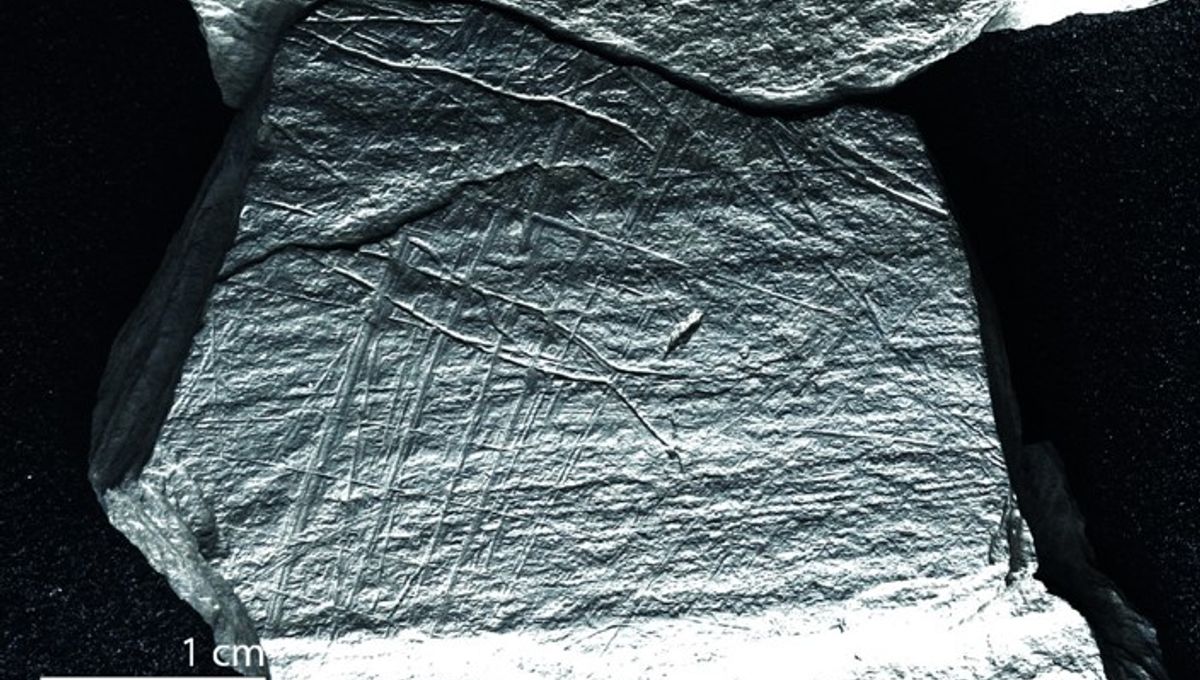
A series of ancient drawings at a Palaeolithic site in Germany appear to show fish caught in nets, suggesting that the use of this fishing technology may go back further than previously thought. Etched into stone plaquettes, the engravings have been dated to 15,800 years ago and form part of a large body of artworks uncovered at a prehistoric camp in Gönnersdorf.
A total of 406 decorated schist slabs have been found at the site, and while these have all been extensively studied in the past, the fishy features had until now gone unnoticed. However, using advanced imaging technologies like Reflectance Transformation Imaging (RTI), the authors of a new study were able to identify the netted creatures on eight of the plaquettes.
Describing the schematic drawings, the researchers say that in each example, “the central location of the fish, within grid lines which clearly overlay them and which exceed them in size, together suggest that the grids represent a form of container – a net or trap – into which the fish have become enmeshed.”
“[This] specific order where the fish motifs are engraved first, followed by the grid motifs, underscores a deliberate artistic process and design, strongly suggesting the depiction of an animal that was at first free swimming (when alone), which was then captured by the creation of the grid,” they continue. With this in mind, the authors conclude that the engravings were not intended to depict fish per se, but rather the dynamic act or concept of fishing.
Such an assumption is supported by the fact that the unfortunate fish shown in the drawings differ greatly from other examples of wildlife found in Stone Age artworks at Gönnersdorf. In contrast to the “detailed and naturalistic depictions of other animal species”, the fish are “characterized by abstraction and minimalism,” suggesting that the ancient artists were more interested in the fishing than the fish.
The researchers also point out that fish remains have been found at Gönnersdorf, indicating that the site’s prehistoric inhabitants did indeed dine on aquatic catches. Speculating as to how these meals may have been obtained, the authors state, “Nets would most likely have been the ideal equipment for catching larger quantities of fish during migrating periods.”
Other significant evidence comes from carved figurines at Gönnersdorf that depict clothed characters. This indicates that the Palaeolithic creators did already have access to textiles during the Magdalenian period, which spanned from 17,000 to 12,000 years ago.
Such fabrics may have been made from fibrous plants like milkweed or nettle and could have been used to produce fishing nets.
Tying together these various lines of evidence, the study authors say that “the presence of fish remains at Gönnersdorf, the evidence for textile manufacture and use, along with the depiction of fish within nets on eight engraved plaquettes, provide the first unambiguous evidence for net fishing in a Magdalenian context.”
The study is published in the journal PLOS ONE.
Source Link: 15,800-Year-Old Sketches Reveal People Were Already Fishing With Nets